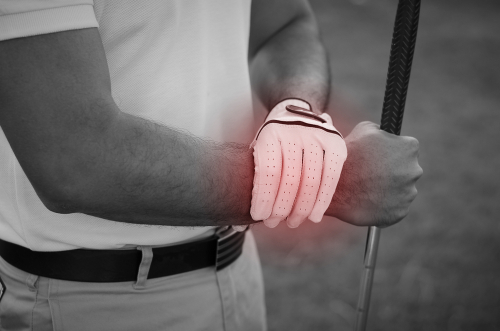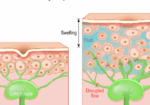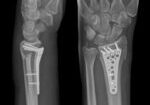Which is better for DeQuervain’s: Splinting or Injection?
Filed under Reviews
Rapid Review
Cavaleri, R., Schabrun, S. M., Te, M., & Chipchase, L. S. (2016). Hand therapy versus corticosteroid injections in de Quervain’s disease treatment: A systematic review and meta-analysis. Journal of hand therapy: official journal of the American Society of Hand Therapists, 29(1), 3–11. https://doi.org/10.1016/j.jht.2015.10.004
The Skinny: DeQuervain’s Tenosynovitis is a stenosing tenosynovial inflammation affecting the abductor pollicis longus and the extensor pollicis brevis in the 1st dorsal compartment. The treatment varies from conservative the surgical, and this review focuses on conservative treatment.

The authors performed a systematic review to compare the effectiveness of steroid injections with 1.) hand therapy splinting alone, 2.) hand therapy splinting with steroid injections, and 3.) steroid alone in treating DeQuervain’s.
In the Weeds: A total of 6 articles were included in the review, which included 334 patients. The mean age of patients was between 27 and 44 years. Three studies compared steroid injections with splinting, and three compared splinting with injections alone. No studies were included that looked at other forms of therapy such as physical agent modalities, exercise, and manual therapy. The time the splint was worn was not specified in the studies.
Bringing It Home: Both groups, including the corticosteroid injection and splinting group, improved overall function and decreased pain. More patients were treated successfully when combined splinting and steroid injection were used together.
Rating: 4/5 The study’s limitations include the lack of specification on the type of splint used and the specific regime. The outcomes measures did not look at the quality of life; instead, they focused on treatment success rate and pain relief. Research into different treatment regimes is needed to make sound recommendations for splinting duration.
1 Comment
Leave a Comment
More To Read
How to use Kinesiology Taping for Shoulder Subluxation
How to us Kinesiology Tape for Shoulder Subluxation By: Tayler Roost What is shoulder subluxation? Shoulder subluxation is a dislocation of the glenohumeral joint. This can be classified as traumatic, non-traumatic, or neurological. A traumatic shoulder subluxation can be caused by contact sports or repetitive shoulder movements. A non-traumatic shoulder subluxation can be caused indirectly…
Read MoreComparing Edema and Lymphedema: Understanding the Differences and Treatment Approaches in Hand Therapy
Comparing Edema and Lymphedema: Understanding the Differences and Treatment Approaches in Hand Therapy As hand therapists we often encounter patients presenting with swollen arms, hands, and/ or fingers, often attributing these symptoms to various conditions. Two commonly confused terms in this area are “edema” and “lymphedema.” While both involve swelling, they have distinct causes, presentations,…
Read MoreAn evaluation of wrist and forearm range of motion during purposeful activities and exercises for distal radius fracture
An evaluation of wrist and forearm movement during purposeful activities and range of movement exercises after surgical repair of a distal radius fracture: A randomized crossover study Collis, J., Mayland, E., Wright-St Clair, V., Rashid, U., Kayes, N., & Signal, N. 2022. An evaluation of wrist and forearm movement during purposeful activities and range of…
Read MoreWound Healing in Hand Therapy
By: Maddie Mott Wound healing (healing hand therapy) involves a complex series of interactions between different cell types, cytokine mediators, and the extracellular matrix with its four basic stages including hemostasis, inflammation, proliferation, and remodeling (Mackay & Miller, 2003). Because successful wound healing requires adequate blood and nutrients to be supplied to the site of…
Read MoreSign-up to Get Updates Straight to Your Inbox!
Sign up with us and we will send you regular blog posts on everything hand therapy, notices every time we upload new videos and tutorials, along with handout, protocols, and other useful information.







Great way of spreading many studies into a short outcome.